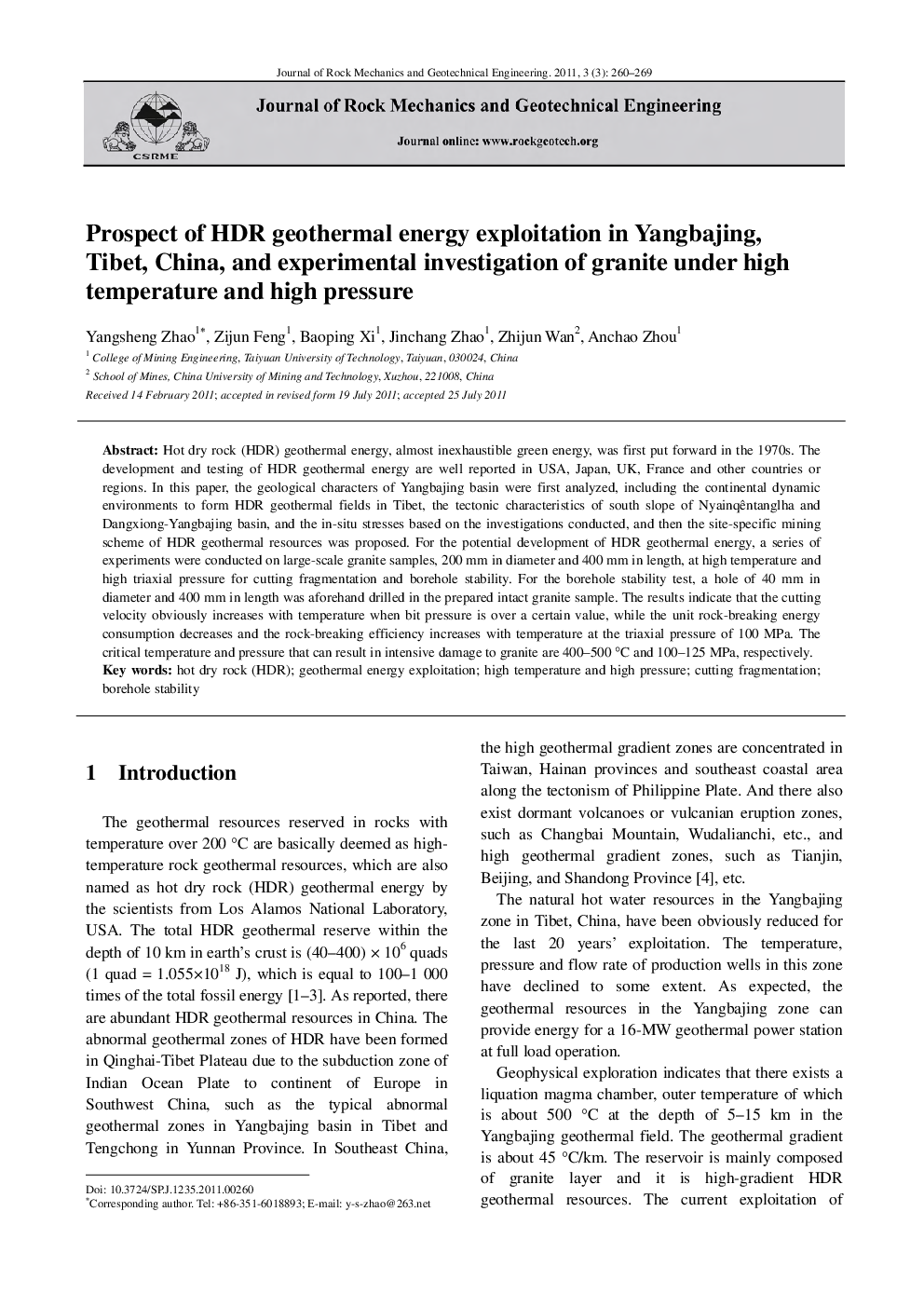| Article ID | Journal | Published Year | Pages | File Type |
|---|---|---|---|---|
| 286786 | Journal of Rock Mechanics and Geotechnical Engineering | 2011 | 10 Pages |
Hot dry rock (HDR) geothermal energy, almost inexhaustible green energy, was first put forward in the 1970s. The development and testing of HDR geothermal energy are well reported in USA, Japan, UK, France and other countries or regions. In this paper, the geological characters of Yangbajing basin were first analyzed, including the continental dynamic environments to form HDR geothermal fields in Tibet, the tectonic characteristics of south slope of Nyainqêntanglha and Dangxiong-Yangbajing basin, and the in-situ stresses based on the investigations conducted, and then the site-specific mining scheme of HDR geothermal resources was proposed. For the potential development of HDR geothermal energy, a series of experiments were conducted on large-scale granite samples, 200 mm in diameter and 400 mm in length, at high temperature and high triaxial pressure for cutting fragmentation and borehole stability. For the borehole stability test, a hole of 40 mm in diameter and 400 mm in length was aforehand drilled in the prepared intact granite sample. The results indicate that the cutting velocity obviously increases with temperature when bit pressure is over a certain value, while the unit rock-breaking energy consumption decreases and the rock-breaking efficiency increases with temperature at the triaxial pressure of 100 MPa. The critical temperature and pressure that can result in intensive damage to granite are 400–500 °C and 100–125 MPa, respectively.
